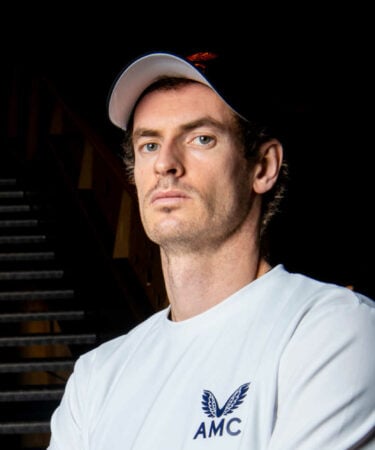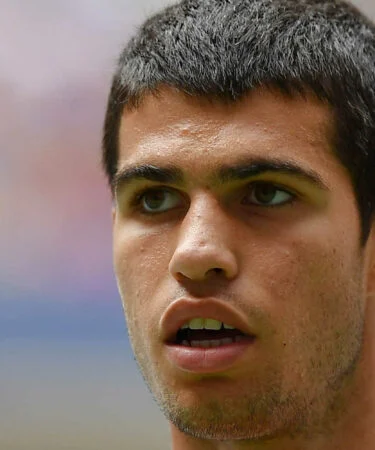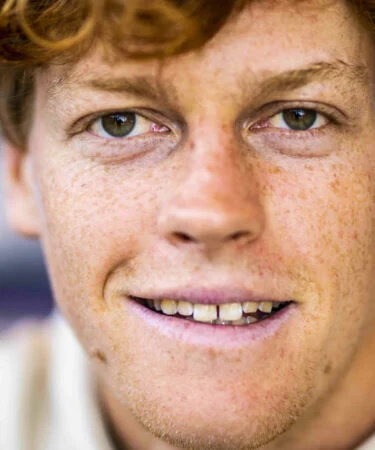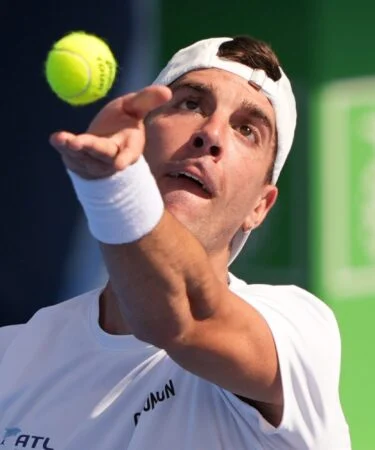How to solve a problem like scheduling? First, admit you have a problem
Australian Open tournament director Craig Tiley says there’s no issue to solve, but he’s missing the point
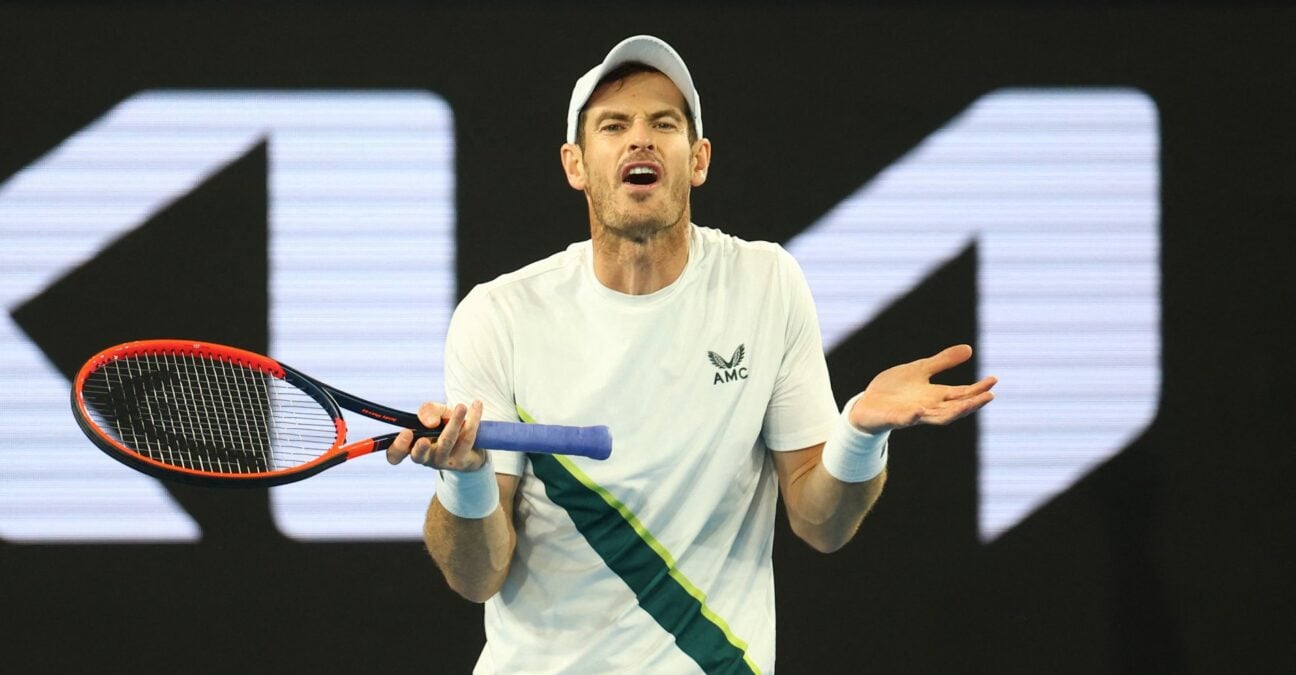 Tennis – Australian Open – Melbourne Park, Melbourne, Australia – January 19, 2023 Britain’s Andy Murray reacts during his second round match against Australia’s Thanasi Kokkinakis (AI/Reuters/Panoramic)
Tennis – Australian Open – Melbourne Park, Melbourne, Australia – January 19, 2023 Britain’s Andy Murray reacts during his second round match against Australia’s Thanasi Kokkinakis (AI/Reuters/Panoramic)
Andy Murray, stiff-legged and doubtless exhausted, wandered back to Melbourne Park on Friday, about eight hours after the finish time for his win over Thanasi Kokkinakis.
Those who expected Murray to just sleep all day might have been surprised, but, of course, he probably didn’t sleep that well with all the adrenaline flowing, and he was on site to do his recovery work.
He even found time to hit some balls, gently, for about 20 minutes, trying to get some of that stiffness out. With a bit of luck his body will allow him to sleep deeply the night before his third-round match with Roberto Bautista Agut of Spain.
Scheduling heavily criticised at this year’s event
The question, of course, is what kind of shape Murray will be in against Bautista Agut. He said he was feeling better in his win over Kokkinakis than he did in his first-round victory over Matteo Berrettini, but it’s anyone’s guess how he will feel or what he will be capable of.
Murray’s victory, finishing at 4.05am after five hours, 45 minutes of battle was incredible – simply incredible. But even as he allowed his achievement to sink in, Murray was already discussing why playing tennis – or any sport – at that time of night, was madness.
“I don’t know who it’s beneficial for,” he said. “A match like that, we come here after the match, and that’s what the discussion is. Rather than it being like epic Murray-Kokkinakis match, it ends in a bit of a farce.
“If my child was a ball kid for a tournament, they’re coming home at 5 in the morning, as a parent, I’m snapping at that. It’s not beneficial for them. It’s not beneficial for the umpires, the officials. I don’t think it’s amazing for the fans. It’s not good for the players. We talk about it all the time. It’s been spoken about for years. When you start the night matches late and have conditions like that, these things are going to happen.”
Andy’s brother Jamie, who did double duty in men’s doubles (losing) and mixed doubles with Taylor Townsend (winning) on Friday, had been openly critical of the scheduling, during his younger brother’s match.
And the doubles star continued his push on Friday, suggesting that there could easily be a back-up plan should the main match on Rod Laver Arena see an injury, leaving the fans short-changed.
Late finishes not an Australian-only affliction
Late nights are not restricted to Australia alone, of course, even if the all-time Grand Slam record came in Melbourne in 2008, when Lleyton Hewitt and Marcos Baghdatis played until 4.34am.
The US Open had its latest-ever finish last year, a 2.50am ending for the Carlos Alcaraz-Jannik Sinner match, a fantastic encounter, just like Murray-Kokkinakis was. The French Open went past 1am last year as its night sessions began to kick in, while Wimbledon has an 11pm curfew.
On the ATP Tour, one event last year in Mexico finished at 4.55am, the latest finish in history.
It’s all about the money, pure and simple
No one is disputing the drama of these matches. They’re epics that will live long in the memory. But tennis needs to look at the bigger picture. If they keep asking their star players – and the ones playing on Laver or other show courts at night are usually the top players – to play deep into the night, impinging on their recovery time, then they’re going to start breaking down, potentially shortening their career.
At 4am, who’s watching that match on TV in Australia? Very few people, surely. Organisers will enjoy the fact that internationally, more people are watching at time, but that’s just greed.
And that’s what all this is about. Money. Night ssessions are designed, almost entirely, to produce as much money as possible; from TV rights holders, to crowds buying tickets and the merchandise and food and drink they buy along the way. Forget about those people who work there, or attend as media; they’re not as important.
Too often in sport, it’s seen as a badge of honour to play a long match, come through a war of attrition. Of course physicality is important but there is just no need and no point to be holding sport way into the early hours. How many of those people who stayed to watch the end of Murray-Kokkinakis went to work the next day on time?
Tiley: “At this point there’s no need to alter the schedule
Australian Open tournament director Craig Tiley has overseen an incredible expansion of the Melbourne Park site, which became the home of the Australian Open in 1988, when the event outgrew Kooyong. It’s a huge, sprawling campus now, full of entertainment offerings and people seem to love it.
Talking to Channel 9 on Friday morning, Tiley was defiant that they’re doing things the right way when it comes to the order of play.
“At this point, there’s no need to alter the schedule,” Tiley said. “We will always look at it, when we do the debrief, like we do every year. But at this point…we’ve got to fit those matches in the 14 days, so you don’t have many options.”
Tiley said changes in the weather, like we’ve had in week one, make life tough. Some players were into the third round before others’ first-round matches had even begun.
“It’s extremely difficult,” he said. “There’s so many variables that go into thinking about how you’re going to make it work each day,” he said. “Over the last three days, we’ve had extreme heat, over five breaks of rain, we’ve had cold, and it’s Melbourne … we’ve had three late nights with scheduling to try and catch up with matches.”
The key line though came when he talked specifically about reducing it to just one night match.
“You are going to have an out-of-the-box situation, like last night, where it goes extra long, unexpectedly… There’s always one.
“You’ve also got to protect the matches. If you just put one match at night and there was an injury, you don’t have anything for the fans or the broadcasters.”
Options include best of three; two matches in the day
There may be no perfect scenario but there are ideas out there.
Perhaps the easiest one would be to make there be only two matches on Rod Laver Arena and Margaret Court Arena in the day session. That single move would go a long way to ensuring that the night session starts on time, offering more of a chance it will finish at a decent hour.
The Baghdatis-Hewitt match only happened because Roger Federer and Janko Tipsarevic had played an epic match earlier in the day. Likewise, matches overran on Thursday, which meant that Murray and Kokkinakis did not start until 10.20.
Switching slams to best of three sets in the first week is another option. It’s something that has been tried in the past; in the 1970s, the US Open and Australian Open did it, to varying levels. It’s not a popular idea with tennis authorities at the moment, but you never know.
You could start the night session earlier, at 6pm, or you could follow Jamie Murray’s idea to play just one night match, with a back-up plan. Or maybe you could replace the final set of men’s matches with a 10-point tiebreak, which would knock off about 45-60 minutes off the end of each match.
The point is there are options. The problem is that for now, the Grand Slams have not appreciated, publicly at least, that there is a problem that needs fixing.







